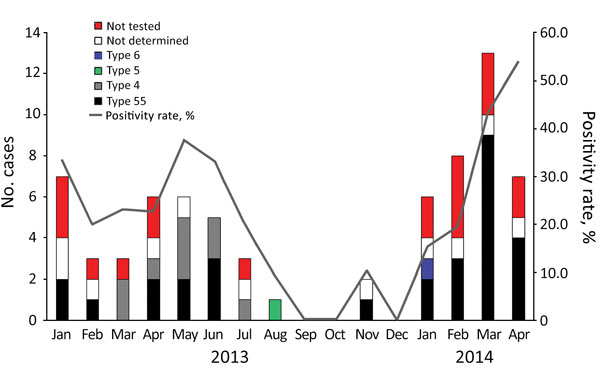Volume 24, Number 7—July 2018
Research
Molecular Epidemiology of Human Adenovirus–Associated Febrile Respiratory Illness in Soldiers, South Korea1
Figure 1

Figure 1. Temporal distribution of acute febrile respiratory illness from human adenovirus (HAdV) infection among soldiers (no. cases) and overall HAdV positivity rate among collected specimens, by HAdV type, South Korea, January 2013–April 2014. We observed HAdV respiratory infection primarily during winter and spring. In 2014, acute febrile respiratory illness in soldiers in South Korea was almost always associated with HAdV-55. Co-circulation of HAdV-55 and HAdV-4 occurred during spring and early summer of 2013.
1Preliminary results from this study were presented at the European Congress of Clinical Microbiology and Infectious Diseases 2015, convened April 25–28, 2015, in Copenhagen, Denmark.
2These authors contributed equally to this article.